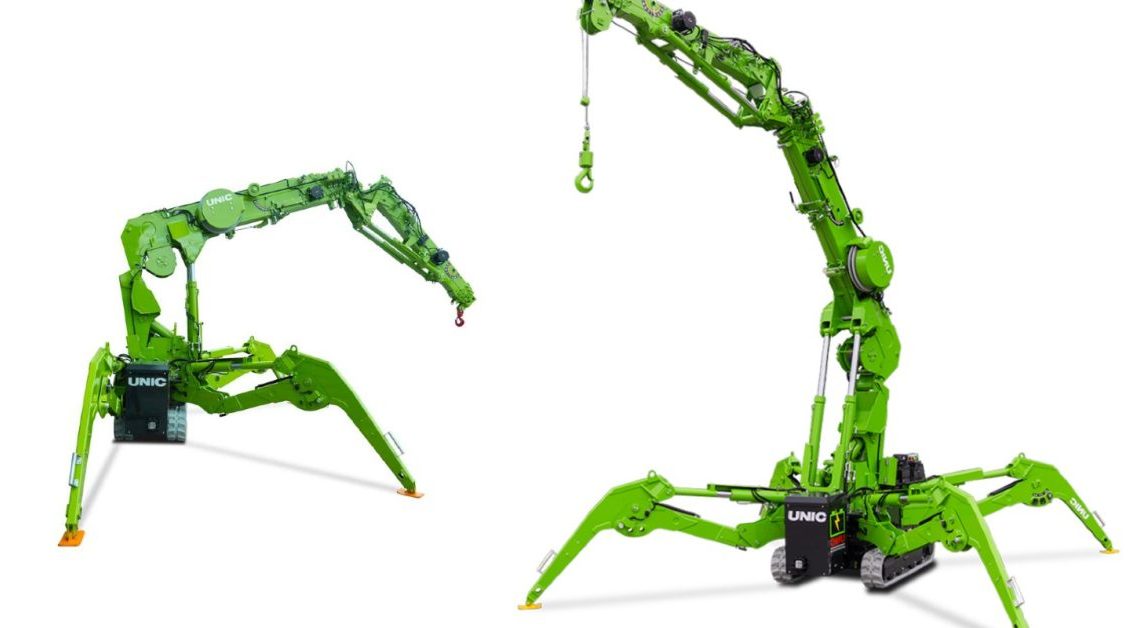
The Furukawa Unic corporation expanded its line of pop-up “spider” cranes earlier this year with the launch of the battery-powered UM325 electric spider crane – and it looks every bit like it’s ready to be cast in a Michael Bay Transformers movie.
Developed with the zero emissions/low noise job sites of Europe in mind, the Unic UM325 features a a high-capacity lithium-ion battery pack that sends power to a series of compact electric motors capable of lifting up to 3,230 kg (over 7,100 lbs.) with relative ease.
Oon the off-chance the job requires too much lifting for those batteries, the UM325 can draw power from the grid to keep on working until the job is done. And it can probably handle more jobs than you think, thanks to an adjustable track width that enables to squeeze through doors, fit on smaller trailers, and maximize job site maneuverability in whatever space it has.
Folds up for easy transport

For their part, the Unic team is really proud of the UM325. “After unveiling our prototype at Bauma 2022, we sparked considerable interest from our dealer network clients,” said Graeme Riley, Unic Cranes Europe CEO. “Following this, we’ve collaborated closely with Unic Furukawa in Japan to further develop the product’s capabilities for the UK and European markets … Now, we’re ready to distribute our first batch of UM325 cranes through our dealer network and make them available (in the UK market).”
The spider crane is controlled remotely for travel, setup, and during lifting operations. Outrigger deployment includes auto-leveling software, while operator safety is kept in check by a RaycoWylie i4500 system. The flexible outrigger design features five extension angles and three extension positions which, along with the crane’s compact column, allows operation in narrow spaces and near walls (you can see that configuration at top, on left).
Non-marking tracks are standard equipment.
Electrek’s Take


The UM325 is Unic’s first electric crane – but as more and more construction companies come up agains no-drip job sites, low emissions zones, tightening noise regulations, and the ESG goals of both corporate and government clients, it seems like only a matter of time before machines like this become more the rule than the exception.
SOURCE | IMAGES: Unic, via Crane Briefing.
Author: Jo Borrás
Source: Electrek



